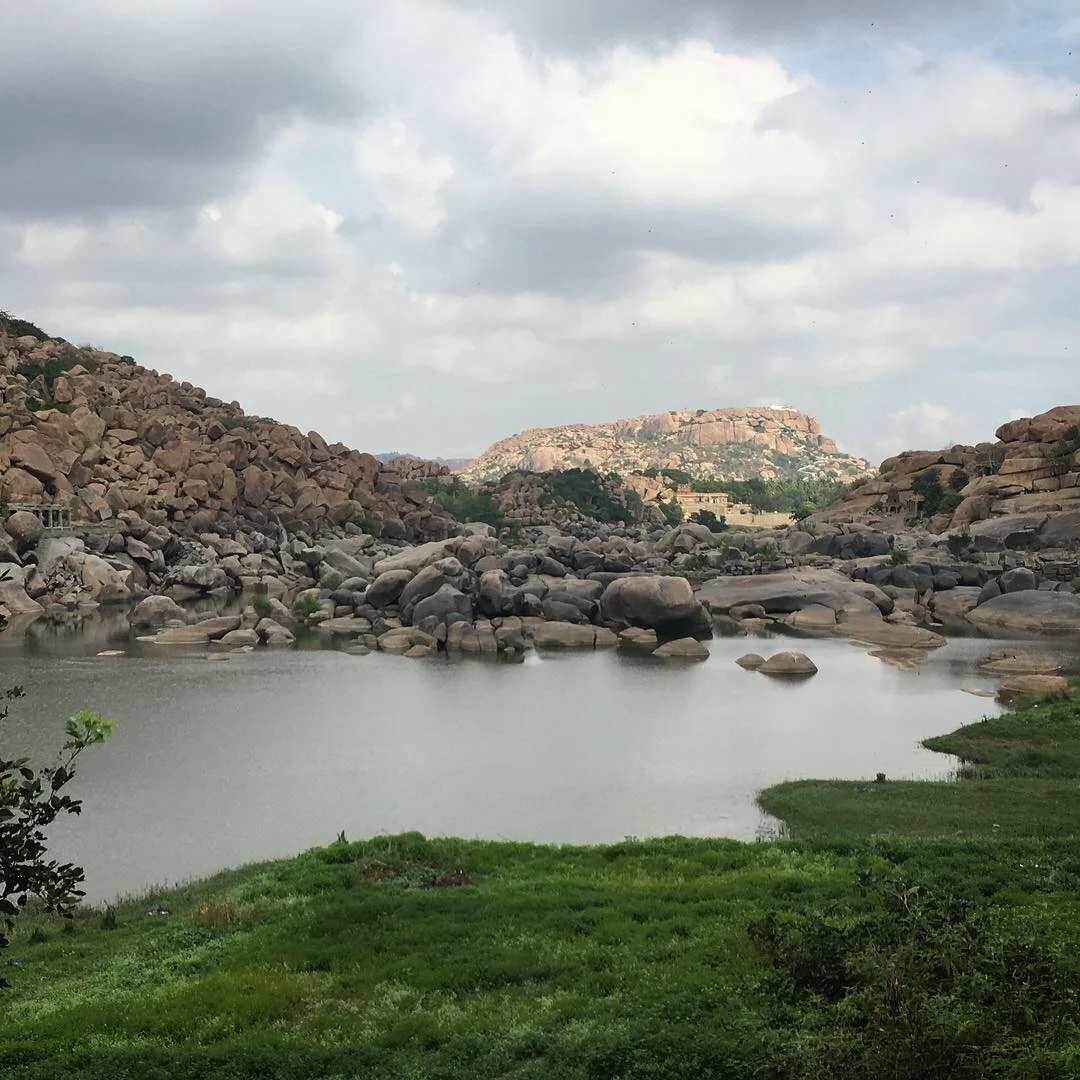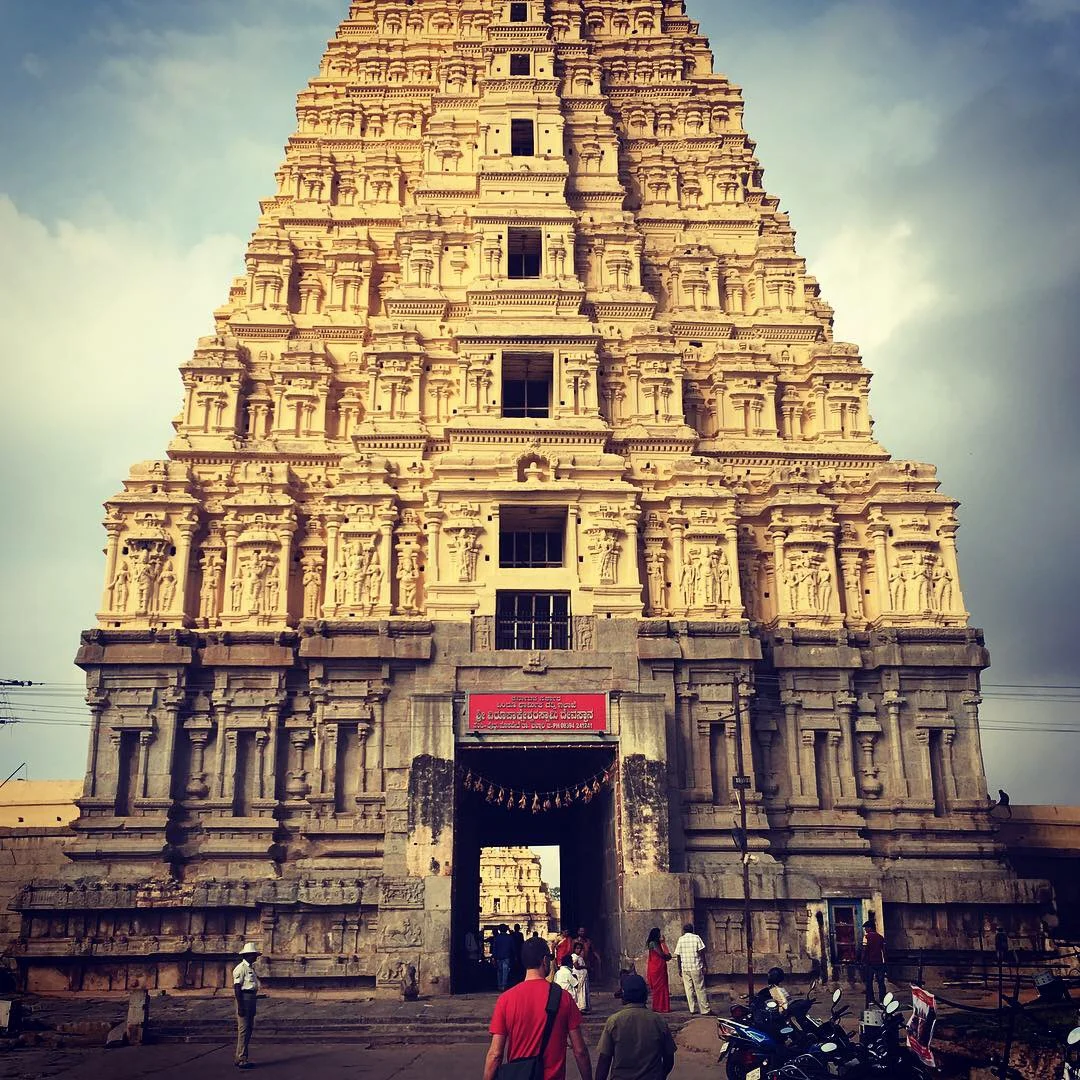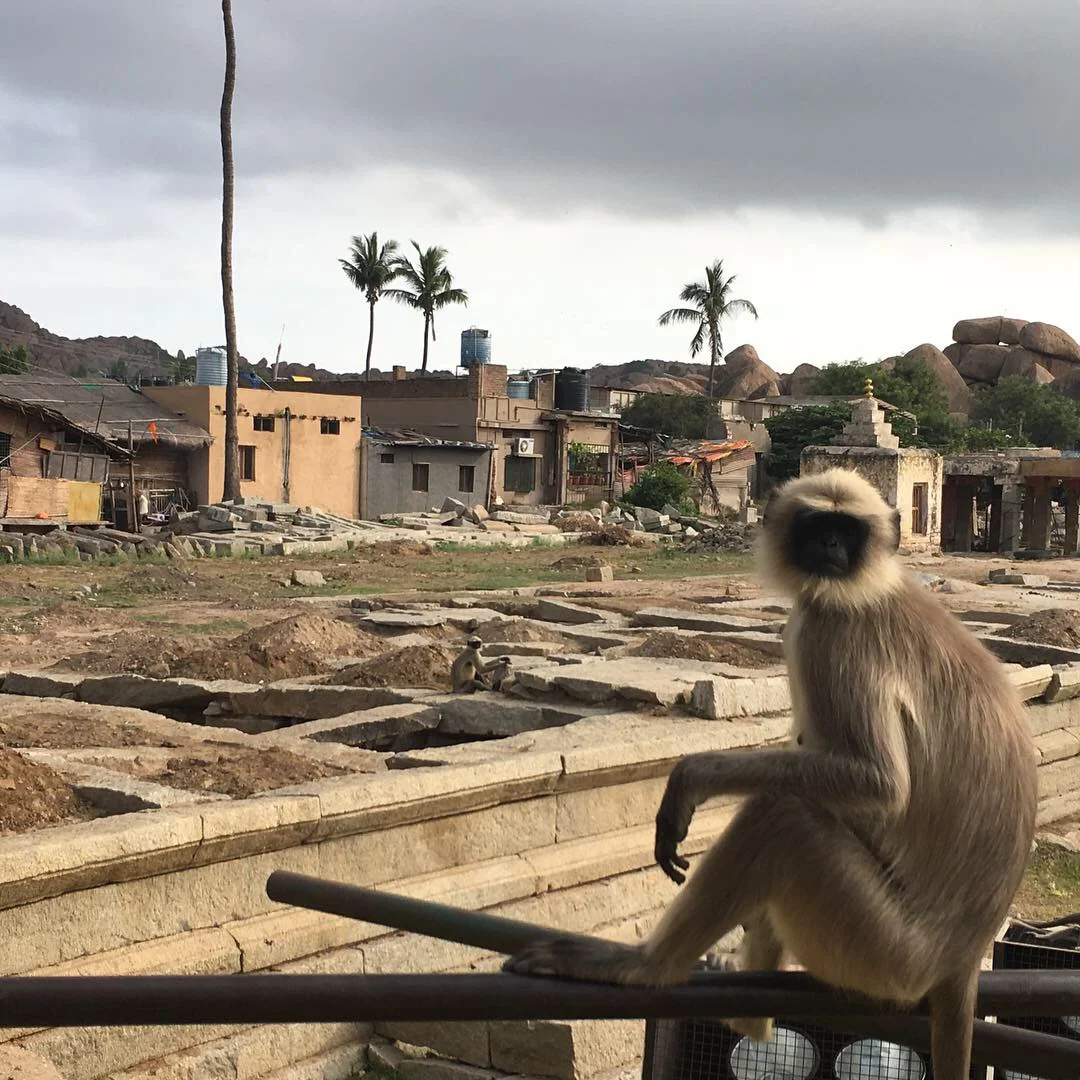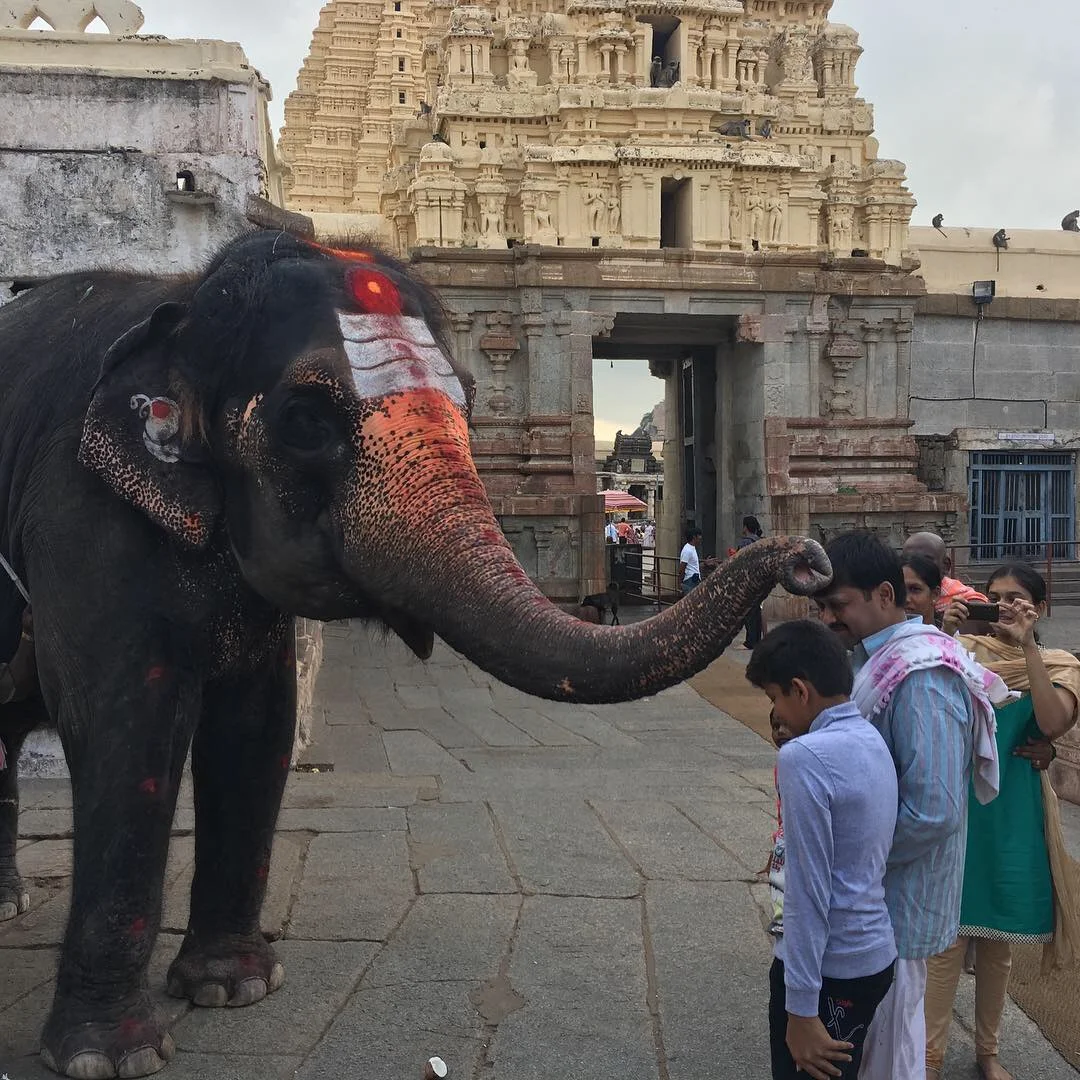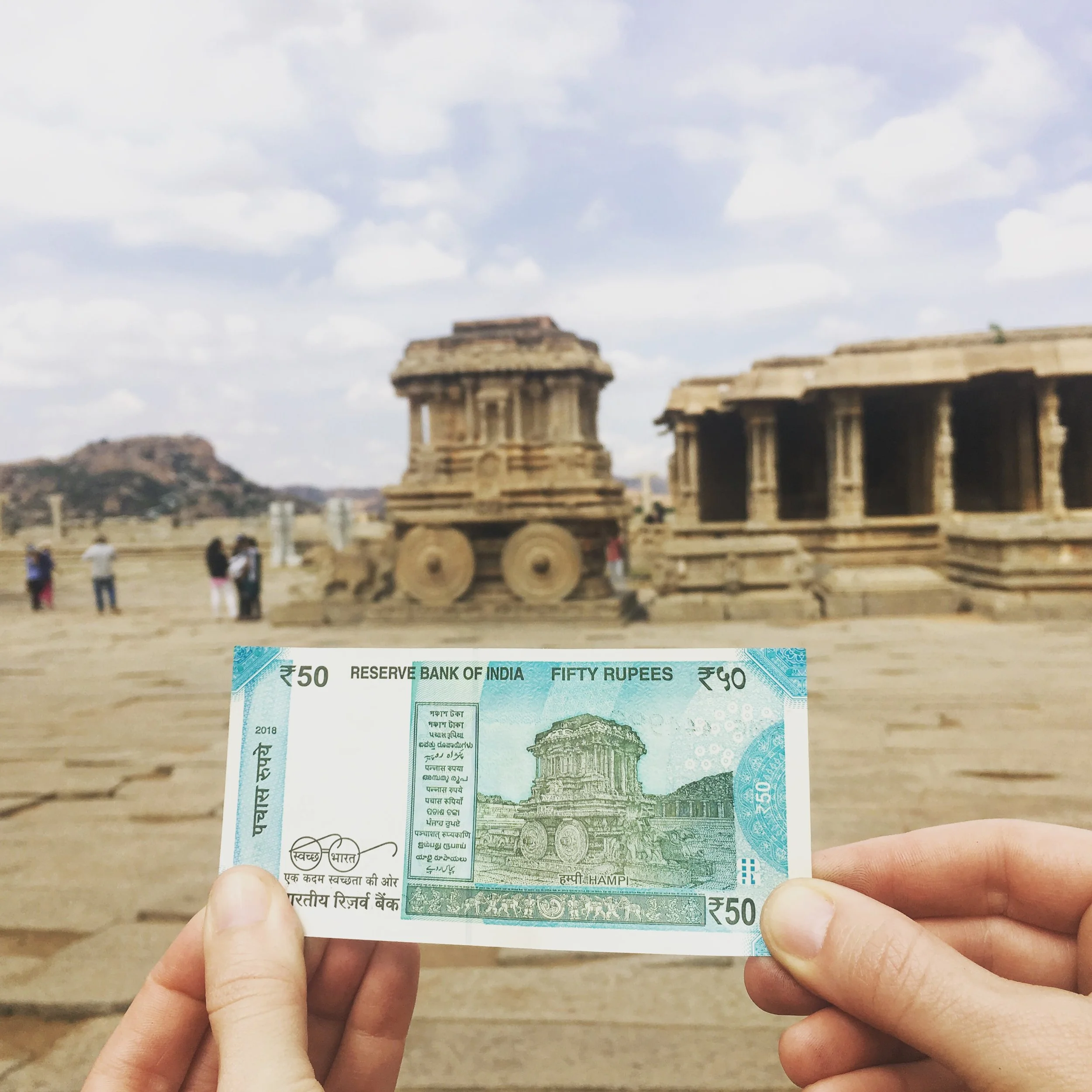Hampi
So Hampi is a UNESCO World Heritage Site that was once the center of a Hindu empire. Stories from Persian and European travelers describe Hampi as a very wealthy city - lots of temples, farms, markets, some elephant stables (!) - on a river. Wikipedia tells me that Hampi was the world’s second-largest city after Beijing by the 1500s and also pretty wealthy - could have been India’s richest city and was definitely one of its biggest trading centers. And then, like all empires, the party came to an end. A group of Muslim kings conquered Hampi, and pillaged and destroyed the city in 1565. An un-Hampi ending indeed...
We spent two days exploring the ruins and trekking around different parts of the city. The place was HUGE - 16 square miles - and built in hills of monstrously large granite boulders. It reminds me of Joshua Tree or parts of the southwest around Sedona or St. George, but much more lush. There are palm trees everywhere and banana plantations tucked in around the river, but it was surprisingly green all over the place.
First place we checked out was the Virupaksha Temple, about which not much is known in terms of origin.
It’s still an active temple and between that and the little tourist ghetto adjacent to it, there were lots of people milling about. Most of them were trying to sell us something - a guidebook, postcards, a bicycle tour. Then there were all the monkeys - langurs, I’m told - which have sleek gray coats and are made of solid muscle. Watching them move is like seeing a whole higher level of athleticism.
And then there was the elephant. We walked into the temple and I honestly didn’t register what it was for a second. It just surprised the hell out of me. It’s apparently the temple elephant and it blesses people who visit. For a price of course - you give your rupee note to its trunk, it passes that off to the elephant stage manager, and then it places its trunk on your head, giving you a blessing. Obviously we did this. If Scott hadn’t been in charge of the money, I might have handed over everything we had so I could hang out with the elephant longer.
Sadly, we moved on. Away from the temple, the crowds thinned and we could explore the ruins. We walked along the banks of the river, clamoring over boulders and finding all kinds of little temples and carvings tucked into the rocks (Dad, it was reminiscent of our time in Dinosaur, looking for petroglyphs). The last stop of the day was the Vitthala temple - dedicated to the Hindu god, Krishna. Similar to the first temple we visited, not much is known about when it was built or who built it. It’s extremely well known, though, as the stone chariot in the temple’s courtyard is featured on the 50 rupee note.
